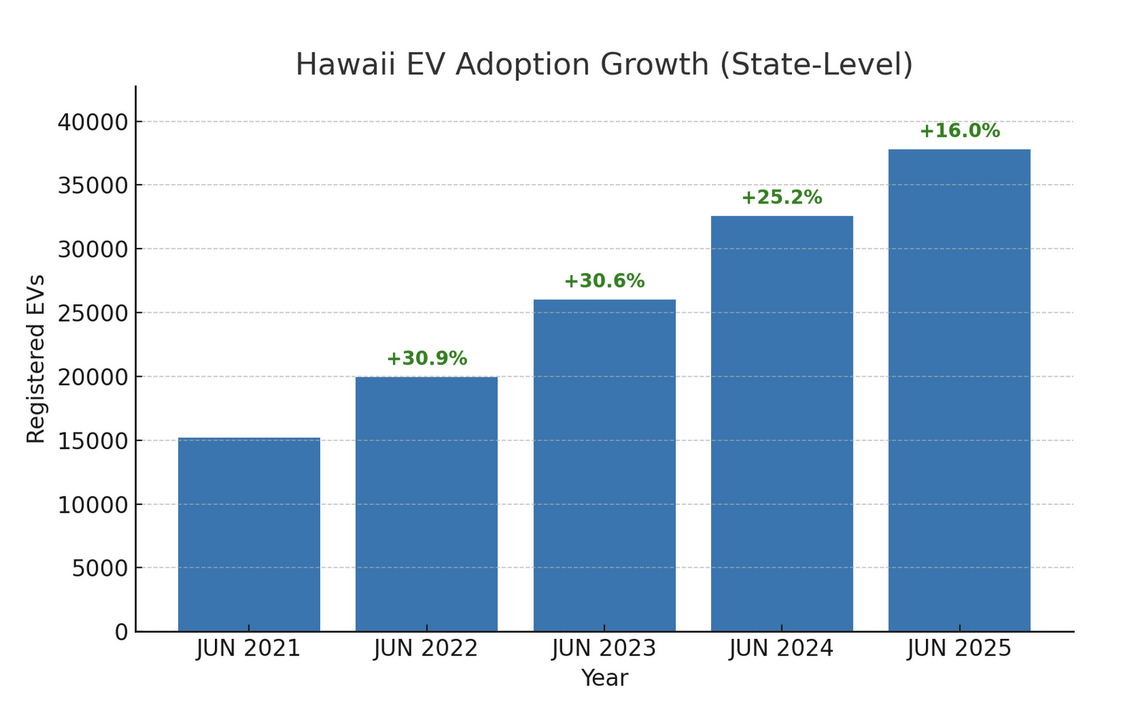EV Fires are Rare and Manageable
Electric vehicle adoption continues to rise in Hawaii. There are now more than 37,000 of them on our roads. They are paving the way to a cleaner and more resilient energy future. As with any emergent technology, there are questions and concerns raised that may create unnecessary hurdles to adoption.
One concern area that we’ve heard more about lately is the risk of fires. The Matson decision to pause shipments of EVs and recent headlines have heightened concerns about EV fire risk. The fact is that EV fires are rare and can be managed with modern firefighting technologies and techniques.
Hawaii EV has not come across any incidents of spontaneous EV fires in Hawaii.
How Big Is the Fire Risk?
VERY low. Many articles have been published about the actual risk of EV fires. Here are a couple.
The reality is that EV fires are rare and most occur after high-impact collisions, damage to the traction (primary) battery, or battery defects. Studies show that internal combustion engine car fires occur 20 times more frequently than EV fires. EVs don’t carry flammable liquids and are rigorously tested for thermal management and impact resistance. Here’s a relevant EVA post on facts regarding EV fires.
Yes, EV fires are more intense and can be challenging to fight. However, with proper equipment and techniques, they can be managed.
What Firefighters Need to Know
Hawaii’s firefighters are no strangers to innovation, and they’re already adapting to the EV era. Modern firefighting tactics for EVs include:
Use water (not foam). Despite myths, water is safe and effective for putting out fires. Up to 8,000 gallons of water (similar to what’s used in a structural fire) may be required to cool the battery and prevent thermal runaway (uncontrolled heat from a cell spreading to surrounding cells in the battery pack).
Battery puncture and water injection systems, like those manufactured by Rosenbauer and Cold Cut Systems, inject water directly into battery modules. By piercing the pack and injecting water directly into it, the fire can be extinguished more rapidly and with less water. Rosenbauer indicates that a vehicle fire can be extinguished with as little as 500 gallons of water.
Post-suppression monitoring. Quarantining the vehicle and monitoring with thermal imaging equipment will help avoid re-ignition.
Smoke and Run-Off Management - As with all vehicle fires, proper PPE and procedures will minimize risk to first responders. Additionally, established run-off management strategies apply to all vehicle fires. Importantly, water has less environmental impact than firefighting foam.
Fleet Management
Government agencies and businesses considering EVs for their fleets can rest assured that fire risk is minimal and manageable. This can be achieved with proper training, preventative maintenance, and access to emergency protocols. It’s worth noting that EVs not only reduce air pollution and emissions and have lower total-cost-of-ownership, but they also represent a lower overall fire risk.
Our recommended actions for fleets include:
EV safety training for your maintenance and safety staff.
Pre-incident planning with local fire department. Create awareness of your fleet mix and work together on preparedness
Design parking and charger equipment placement so that there is clear access and spacing between vehicles.
Select EVs with LFP (Lithium Ferrous Phosphate) batteries, which have even lower thermal runaway risk.
Track and monitor battery health. EV OEMS have capabilities (telematics) allowing for monitoring of various battery statistics, including cell voltage, temperature, and fault codes, that can help proactively detect issues. There are also third parties that offer related services.
Shipping EVs Is Safe
The recent decision to restrict EV shipments to Hawaii due to perceived fire risks is understandable but we are hopeful that Matson will promptly deploy necessary safety measures so that they may resume shipping. Until then, Pasha remains the sole transporter of EVs to and from the West Coast. Young Brothers also continues to ship EVs between the islands.
There are best practices to minimize fire risk during transport:
Requiring a low SOC (state of charge). Shipping EVs with a 30% SOC will further reduce the already low fire risk. Batteries with a low SOC will have a reduced chance of thermal runaway.
Excluding vehicles with damaged and modified batteries. While there are several layers of protection for the battery, visible damage to the vehicle's undercarriage might suggest a compromised battery.
Proactive fire detection. The use of thermal cameras to detect unexpected heat sources can allow for proactive mitigation.
Modern onboard fire suppression equipment (see above) will allow for any fire to be mitigated promptly.
Vehicle fire risk during transport is very low. With proper precautions described above, shipping can be conducted safely.
Let’s Accelerate Our Transition
The transition to a resilient energy future is critical for Hawaii, a heavily fossil-dependent state. By transitioning our economy to locally sourced energy and reducing our dependence on liquid fuels, we can dramatically achieve the desired independence. Many measures are being taken to facilitate this - electrifying our transportation sector is one.
We’re already seeing benefits of EVs: reduced emissions, lower operating costs, and energy resilience. Let’s not let misconceptions slow our progress.
Resources
NHTSA Emergency Response Guides (includes manufacturer-specific response procedures) - www.nhtsa.gov/emergency-response-guides
International Association of Fire Chiefs Bulletin - Fire Department Response to Electrical Vehicle Fires - www.iafc.org/docs/default-source/1haz/respondingtoelectricalvehiclefires.pdf
The National Fire Protection Association provides updates on all matters related to firefighting. https://www.nfpa.org/
Cold Cut Cobra EV Firefighting guide (includes product demonstration video) - www.coldcutsystems.com/handling-of-lithium-ion-fires
Rosenbauer America BEST Information (includes product videos) - rosenbaueramerica.com/rosenbauer-battery-extinguishing-system-technology




